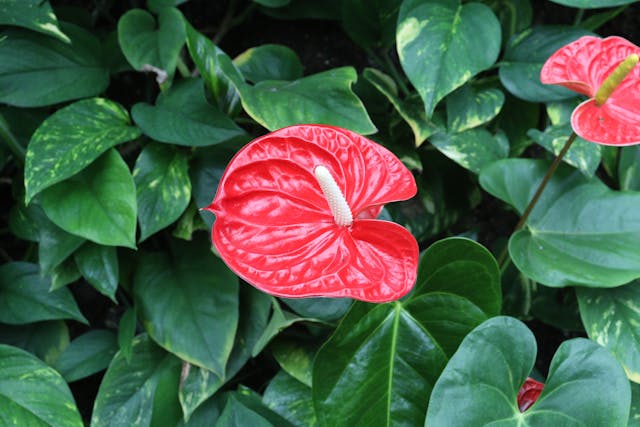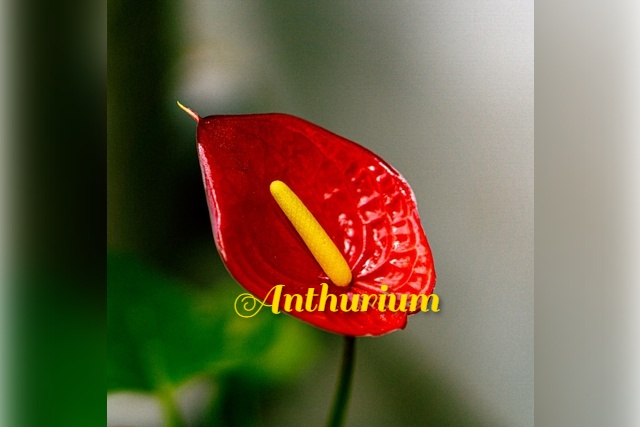Anthuriums, with their glossy, heart-shaped leaves and vibrant blooms, are a stunning addition to any indoor garden. But how do you keep these exotic beauties thriving? If you’ve ever wondered how to care for anthuriums, you’re in the right place. This comprehensive guide will walk you through everything you need to know—from lighting and watering to troubleshooting common problems. Whether you’re a seasoned plant parent or a beginner, this guide will help you master the art of anthurium care.
Understanding Anthuriums: What Makes Them Unique?
Before diving into how to care for anthuriums, it’s essential to understand what makes these plants special. Native to tropical rainforests, anthuriums thrive in warm, humid environments. Their striking flowers, called spathes, come in shades of red, pink, white, and even green. The plant’s glossy foliage adds to its appeal, making it a popular choice for indoor decor.
Anthuriums are epiphytes, meaning they grow on other plants in their natural habitat. This characteristic influences their care requirements, as they prefer well-draining soil and indirect light. By mimicking their natural environment, you can ensure your anthurium thrives.
How to Care for Anthuriums: Light Requirements
Light is one of the most critical factors in how to care for anthuriums. These plants prefer bright, indirect light. Direct sunlight can scorch their leaves, while too little light can hinder blooming.
Related Article: What are the Best Grow Lights for Indoor Gardening
Place your anthurium near an east- or west-facing window where it can receive filtered sunlight. If natural light is limited, consider using a grow light to supplement. Remember, the right light conditions are key to encouraging those stunning blooms.

Watering Anthuriums: Striking the Right Balance
When it comes to how to care for anthuriums, watering is a delicate art. Overwatering can lead to root rot, while underwatering can cause the plant to wilt.
Water your anthurium when the top inch of soil feels dry to the touch. Use room-temperature water and ensure the pot has drainage holes to prevent waterlogging. During the growing season (spring and summer), you may need to water more frequently. In winter, reduce watering to match the plant’s slower growth rate.
Humidity and Temperature: Creating a Tropical Oasis
Anthuriums thrive in humid environments, so maintaining proper humidity levels is crucial. Aim for 60-80% humidity, which mimics their natural habitat.
To increase humidity, place a humidifier near your plant or set the pot on a tray filled with pebbles and water. Grouping plants together can also create a microclimate with higher humidity.
Temperature-wise, anthuriums prefer a range of 65-80°F (18-27°C). Avoid exposing them to temperatures below 60°F (15°C), as this can stunt growth and damage the plant.
Soil and Potting: The Foundation of Healthy Growth
The right soil mix is essential for how to care for anthuriums. These plants need well-draining, aerated soil to prevent root rot. A mix of orchid bark, perlite, and peat moss works well.
Repot your anthurium every 2-3 years or when it becomes root-bound. Choose a pot that’s slightly larger than the current one, and ensure it has drainage holes. Repotting also gives you a chance to refresh the soil and inspect the roots for any issues.
Fertilizing Anthuriums: Feeding for Vibrant Blooms
Fertilizing is a key aspect of how to care for anthuriums. Use a balanced, water-soluble fertilizer with an NPK ratio of 20-20-20.
During the growing season, fertilize your anthurium every 6-8 weeks. In winter, reduce feeding to once every 12 weeks. Over-fertilizing can lead to salt buildup in the soil, so flush the soil occasionally with water to prevent this.
Pruning and Grooming: Keeping Your Anthurium Pristine
Regular pruning helps maintain your anthurium’s shape and encourages new growth. Remove yellow or dead leaves by cutting them at the base. Trim spent flowers to redirect energy to new blooms.
Wipe the leaves with a damp cloth to remove dust, which can block sunlight and hinder photosynthesis. Grooming not only keeps your plant looking its best but also promotes overall health.
Common Problems and Solutions: Troubleshooting Anthurium Care
Even with the best care, anthuriums can face issues. Here are some common problems and how to address them:
Yellow Leaves:
Often caused by overwatering or poor drainage. Adjust your watering routine and ensure the pot has proper drainage.
Brown Leaf Tips:
Usually a sign of low humidity. Increase humidity levels using a humidifier or pebble tray.
Lack of Blooms:
This can result from insufficient light or improper fertilization. Move the plant to a brighter spot and adjust your feeding schedule.
Propagating Anthuriums: Growing Your Collection
Propagating anthuriums is a rewarding way to expand your plant collection. The easiest method is division, which involves separating the plant into smaller sections during repotting.
Ensure each division has healthy roots and at least one leaf. Plant the divisions in fresh soil and care for them as you would a mature plant. With proper care, they’ll grow into stunning specimens.
Styling with Anthuriums: Enhancing Your Space
Anthuriums are not just beautiful—they’re versatile too. Use them as a centerpiece on your dining table, place them on a shelf to add a pop of color, or group them with other tropical plants for a lush display.
Their long-lasting blooms make them perfect for cut flower arrangements. Simply snip a stem and place it in a vase with water for a stunning, low-maintenance bouquet.
Conclusion
Mastering how to care for anthuriums is all about understanding their needs and providing the right environment. From proper lighting and watering to maintaining humidity and fertilizing, every aspect plays a role in their health and beauty. With this guide, you’re well-equipped to grow thriving anthuriums that will brighten your home for years to come.

